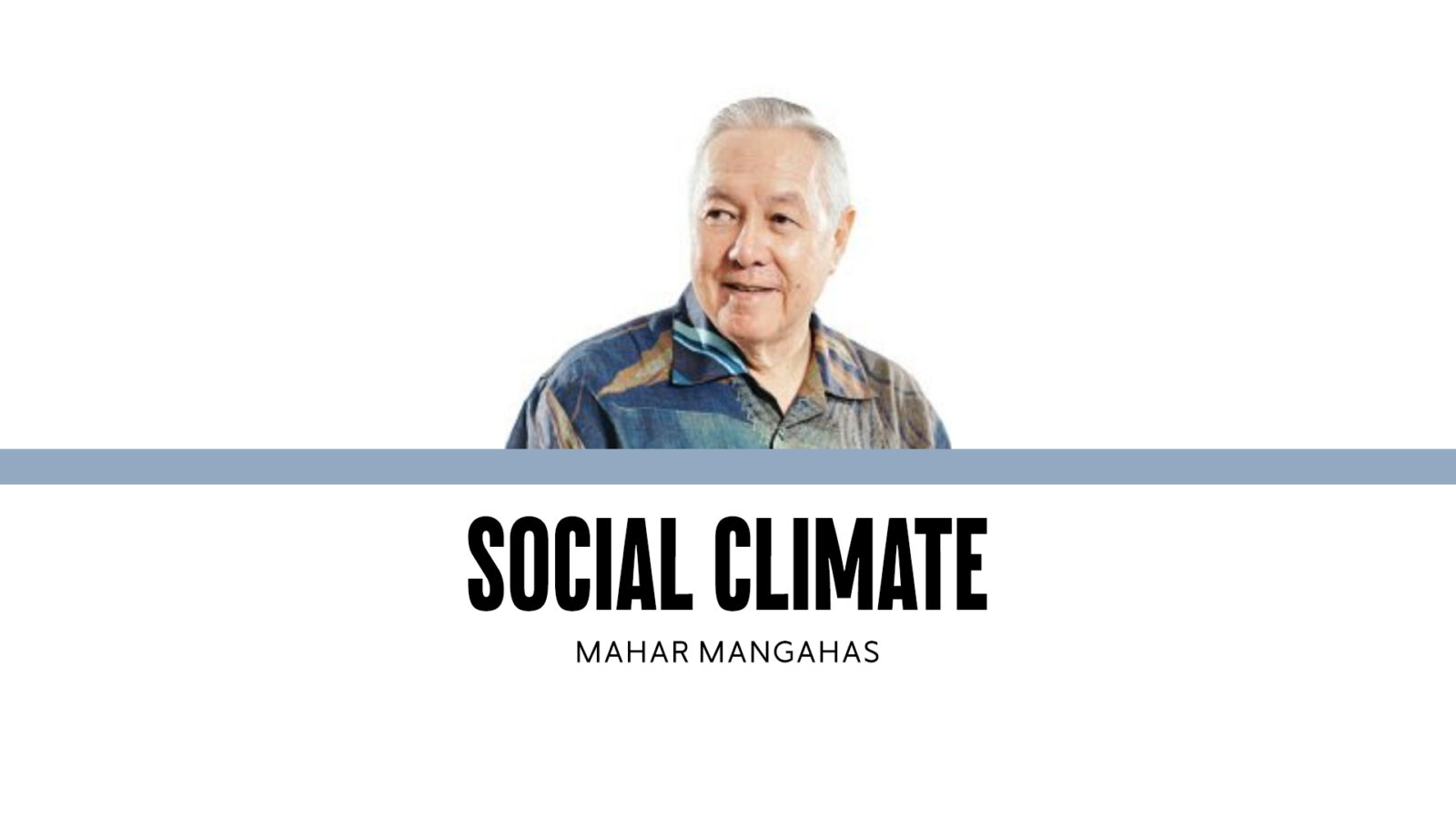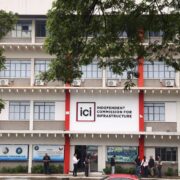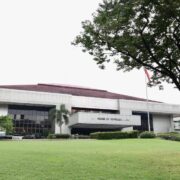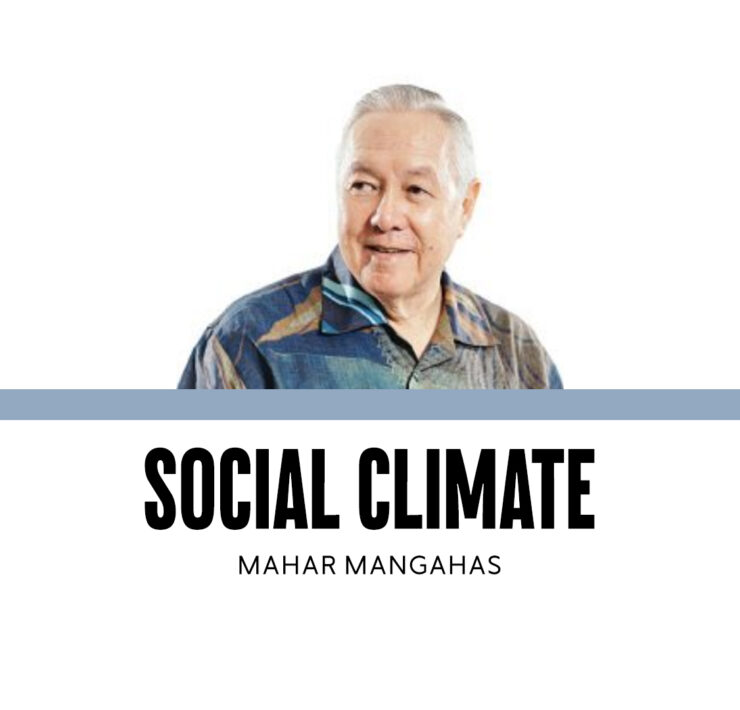Economic growth unshared

In its entirety, as measured by real Gross Domestic Product (GDP), adjusted for inflation), the Philippine economy grows very quickly. Annual economic growth of 5+ percent, given annual population growth of less than 1 percent, means 4+ percent growth per person. That means doubling the GDP per person in 17+ years, and quadrupling it per person in 35 years. This implies so much room for sharing among the Filipino people, if only the growth could be equally shared.
Self-Rated Poverty, as of late April 2025, is 50 percent of households, but it had already fallen to 45 percent (quarterly average) in 2019, before the pandemic. This was after a slow, and rather bumpy, downward path from a peak of 74 percent in July 1983, including the all-time low of 38 percent in March 2019.
Social Weather Stations (SWS) has now surveyed poverty more than 140 times. The surveys were semi-annual in 1986-91, and have been quarterly since 1992—missing only Q1−Q3 of pandemic year 2020; poverty was at 48 percent in 2020Q4. After the pandemic, the average poverty percentage was 46 in 2021, 48 in 2022, 48 again in 2023, and 57 in 2024; not yet a full recovery to prepandemic.
Now hunger is at 20 percent again. And now comes the new report, “First Quarter 2025 Social Weather Survey: Hunger at 20.0% by end of April 2025” (www.sws.org.ph, 6/27/25). It shows that involuntary hunger had already fallen to 9.3 percent (quarterly average) of households in 2019, from a peak of 22.0 percent in 2014. It then spiked to 21.1 in 2020 (average)—with the all-time high 30.7 percent in September. The average settled down to 10.7 in 2023, but jumped again to 20.2 last year (see “Hunger zoomed in 2024,” inquirer.net, 1/18/25). Like poverty, this is not yet a recovery to prepandemic.
The SWS quarterly data on hunger have been unbroken since 1998, having used mobile phone interviewing in Q1–Q3 of 2020. Analysis of the long-term data, by my SWS colleague Geoffrey Ducanes and myself, shows that both poverty and hunger have a weak, or statistically insignificant, connection to economic growth, but a strong relation to inflation in the cost of living.
I’m not aware of any regular series of official surveys, besides the Social Weather Surveys, that measure hunger. In fact, I haven’t seen any other questionnaires that have used the direct Filipino term “gutom,” and would be pleased to learn of other researchers who have done so.
There is ample data to show that “trickle-down” economic growth has not worked to uplift the poor and hungry. The increases in money incomes that accompany growth in GDP quickly lose their real value for workers with sticky wages and salaries and for all others who are unable to float along with inflation.
Why is it always the banks who cheer for GDP growth, even making their own separate projections of it? GDP is the aggregate of production in all sectors. But, regardless of what sectors experience economic growth, their additional business always means more transactions for the banking industry.
The appeal of GDP lies in measuring a sector’s production by means of the value-added by businesses to their raw materials, coming from other sectors. The classic factors of production are land, labor and capital, which receive rents, wages and profits respectively. Of course, there are many kinds of land/natural resources, types of human capital, and types of physical capital, each earning their incomes in various ways. There is financial capital, which receives interest payments. There is technology, which may be embedded in any of the classic factors of production.
The accounting for GDP might be able to clarify how much is each type of income; but it won’t be able to quantify the incomes of the recipients themselves, because it is sourced from surveys of production, not surveys of income. These surveys of production are quarterly, enabling quarterly measurement of GDP.
On the other hand, the official surveys of (family) income are now biennial, the last two being for reference years 2023 and 2021, and previously they were triennial. This infrequency in surveying income explains why official estimates of poverty are few and far between. It is quite oriented for capitalistic economics.
There is need for reliable, regular, and publicly-open data on all the factor prices, over time. As an academic, I think there could be, and should be, periodic measurement of the wages of workers, by occupation and level of skill. This would be very valuable work for organized labor, who should not wait for the government to put it on the statistical agenda. All professional groups would, I think, benefit from having regular data about the earnings of their members. How about the rates of profit? How about the rentals of property?
Perhaps, the issues in generating such information are not so much matters of science, as of economic power relations.
Dr Mahar Mangahas is a multi-awarded scholar for his pioneering work in public opinion research in the Philippines and in South East Asia. He founded the now familiar entity, “Social Weather Stations” (SWS) which has been doing public opinion research since 1985 and which has become increasingly influential, nay indispensable, in the conduct of Philippine political life and policy. SWS has been serving the country and policymakers as an independent and timely source of pertinent and credible data on Philippine economic, social and political landscape.





















The feng shui of Campaner Street